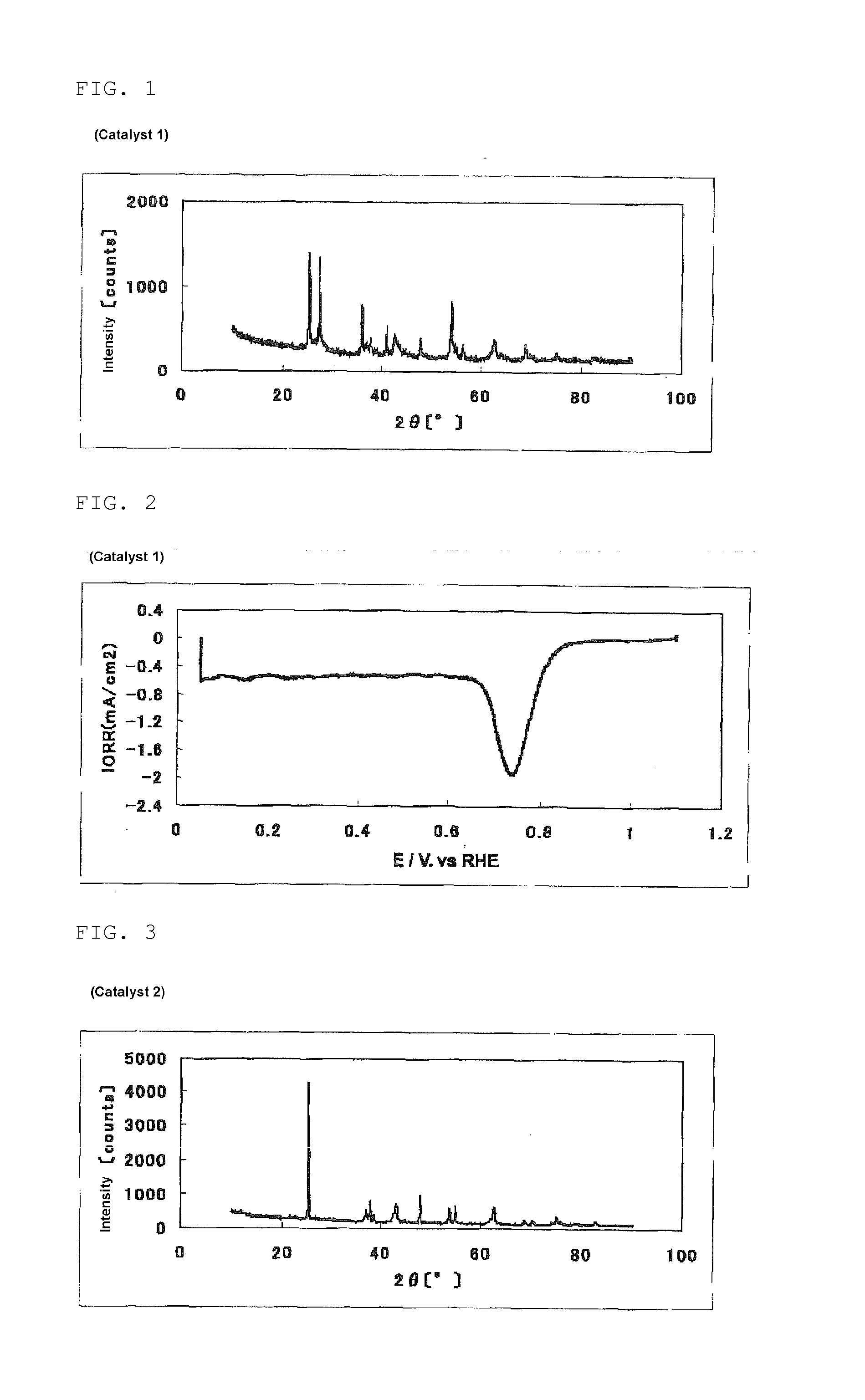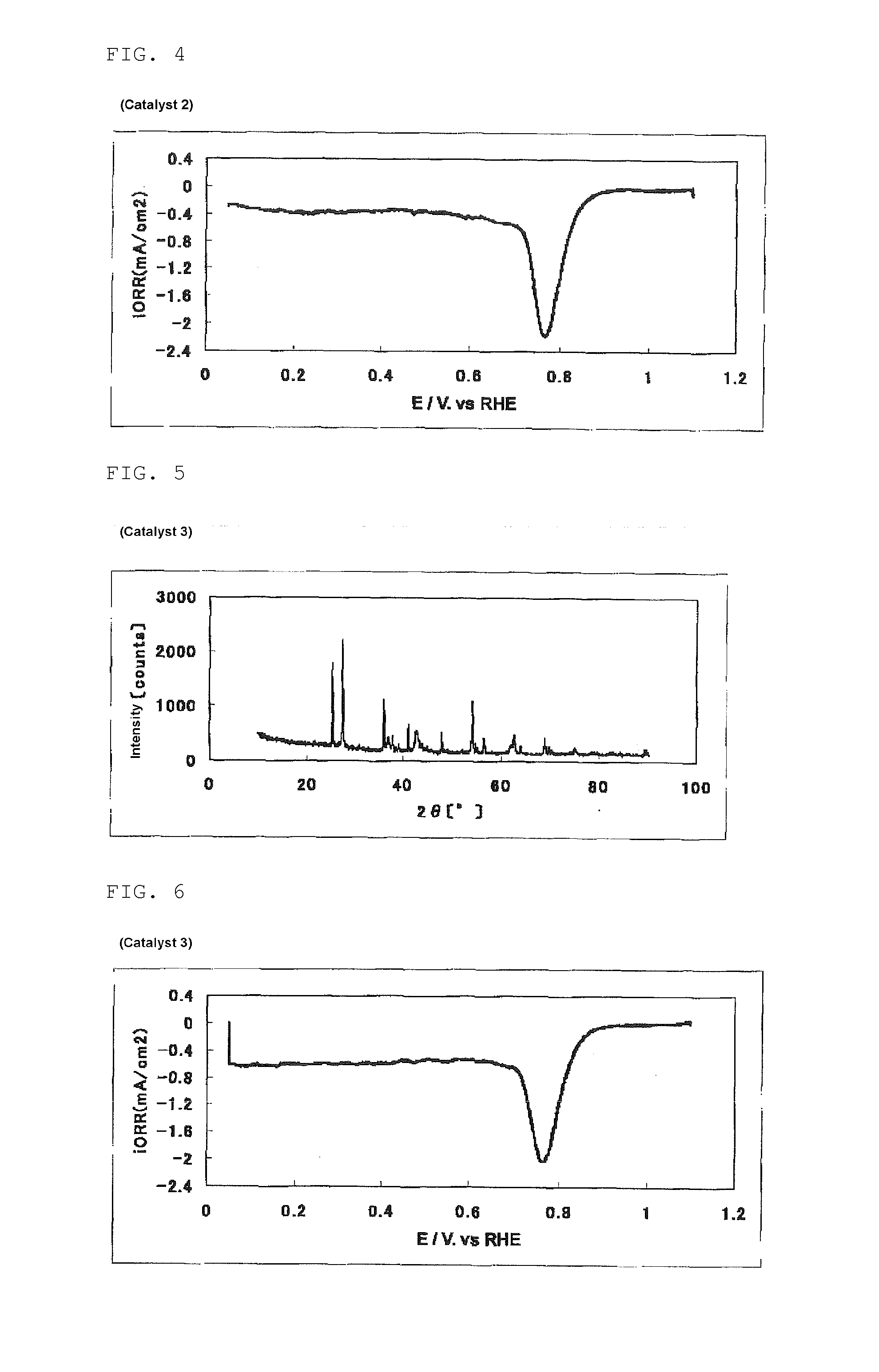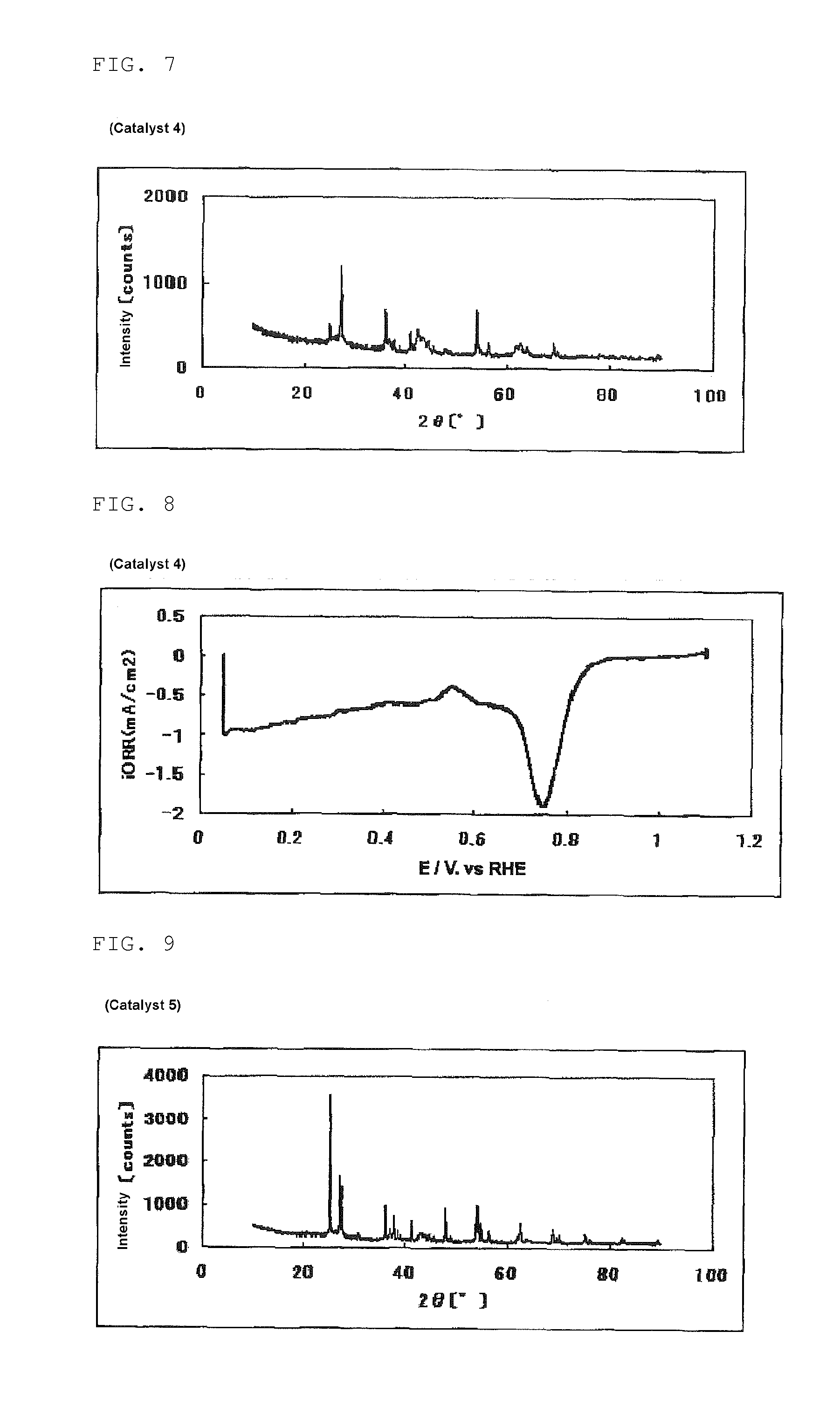Process for producing a fuel cell electrode catalyst, fuel cell electrode catalyst and use thereof
a fuel cell electrode and catalyst technology, applied in the direction of organic compounds/hydrides/coordination complex catalysts, cell components, physical/chemical process catalysts, etc., can solve the problems of noble metals used on the cathode surface, limited resource amount, and inability to meet the requirements of long-term durability, etc., to achieve high catalytic activity and high catalytic activity
- Summary
- Abstract
- Description
- Claims
- Application Information
AI Technical Summary
Benefits of technology
Problems solved by technology
Method used
Image
Examples
example 1
[0335]In a beaker, 2.60 g (25.9 mmol) of acetylacetone was put. While stirring this, 5.00 ml (17.6 mmol) of titanium isopropoxide was added, and 16 ml of acetic acid was further dropwise added over 2 minutes, to prepare a titanium solution (1).
[0336]In a 200 ml beaker having a stirring bar (length: 30 mm), 60 ml of water, 50 ml of ethanol, and 60 ml of acetic acid were put. 8.74 g (70.4 mmol) of pyrazinecarboxylic acid was added thereto and completely dissolved by the application of ultrasonic wave using an ultrasonic washer. To the resultant solution, while this was stirred, 0.100 ml of SURFLON S-211 (manufactured by AGC SEIMI CHEMICAL CO., LTD., perfluoroalkyl carboxylic acid salt content: 50% by mass) was added, and 290 mg (1.67 mmol) of iron(II) acetate was added little by little, and these were completely dissolved over about 10 minutes. Then, with the temperature kept at room temperature and stirring, the titanium solution (1) was dropwise added over 10 minutes. The dropwise a...
example 2
[0340]The same procedure was performed as in Example 1, except that the amount of SURFLON S-211 was changed from 0.100 ml to 0.500 ml, to obtain 224 mg of a powdery catalyst (2). The mass of the powder for calcining obtained in this process was 10.7 g.
[0341]The evaluation results of the catalyst (2) are shown in Table 1, FIG. 3 (powder X-ray diffraction spectrum of the catalyst (2)) and FIG. 4 (measurement result of the oxygen reducing ability of a fuel cell electrode (2) using the catalyst (2)).
example 3
[0342]The same procedure was performed as in Example 1, except that the amount of SURFLON S-211 was changed from 0.100 ml to 1.00 ml, to obtain 203 mg of a powdery catalyst (3). The mass of the powder for calcining obtained in this process was 11.2 g.
[0343]The evaluation results of the catalyst (3) are shown in Table 1, FIG. 5 (powder X-ray diffraction spectrum of the catalyst (3)) and FIG. 6 (measurement result of the oxygen reducing ability of a fuel cell electrode (3) using the catalyst (3)).
PUM
| Property | Measurement | Unit |
|---|---|---|
| Temperature | aaaaa | aaaaa |
| Temperature | aaaaa | aaaaa |
| Temperature | aaaaa | aaaaa |
Abstract
Description
Claims
Application Information
 Login to View More
Login to View More - R&D
- Intellectual Property
- Life Sciences
- Materials
- Tech Scout
- Unparalleled Data Quality
- Higher Quality Content
- 60% Fewer Hallucinations
Browse by: Latest US Patents, China's latest patents, Technical Efficacy Thesaurus, Application Domain, Technology Topic, Popular Technical Reports.
© 2025 PatSnap. All rights reserved.Legal|Privacy policy|Modern Slavery Act Transparency Statement|Sitemap|About US| Contact US: help@patsnap.com



